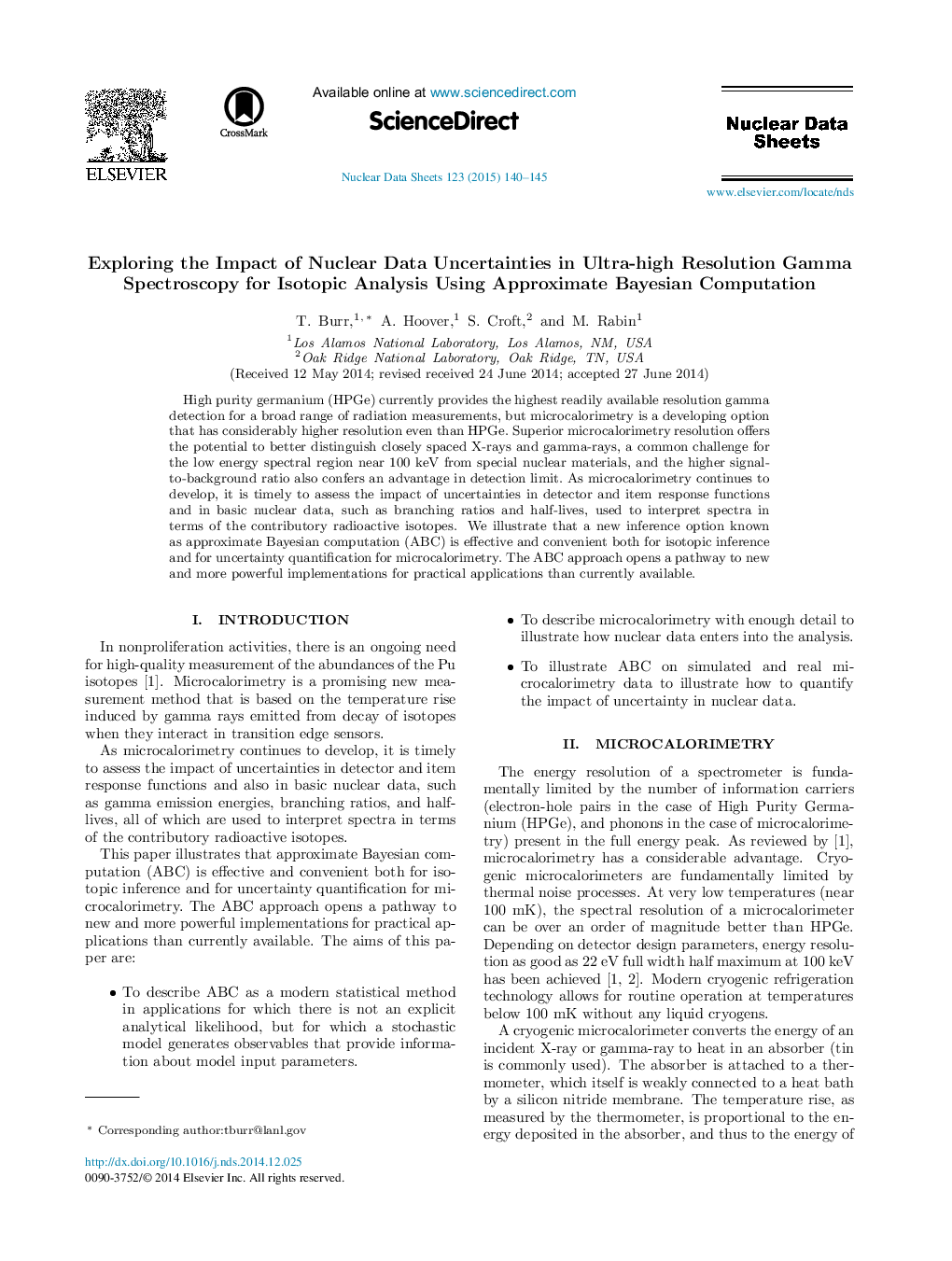| Article ID | Journal | Published Year | Pages | File Type |
|---|---|---|---|---|
| 1834952 | Nuclear Data Sheets | 2015 | 6 Pages |
High purity germanium (HPGe) currently provides the highest readily available resolution gamma detection for a broad range of radiation measurements, but microcalorimetry is a developing option that has considerably higher resolution even than HPGe. Superior microcalorimetry resolution offers the potential to better distinguish closely spaced X-rays and gamma-rays, a common challenge for the low energy spectral region near 100 keV from special nuclear materials, and the higher signal-to-background ratio also confers an advantage in detection limit. As microcalorimetry continues to develop, it is timely to assess the impact of uncertainties in detector and item response functions and in basic nuclear data, such as branching ratios and half-lives, used to interpret spectra in terms of the contributory radioactive isotopes. We illustrate that a new inference option known as approximate Bayesian computation (ABC) is effective and convenient both for isotopic inference and for uncertainty quantification for microcalorimetry. The ABC approach opens a pathway to new and more powerful implementations for practical applications than currently available.
